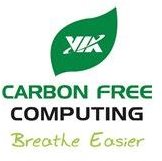A Review of the Costs of Going Green Compared to Not
Trade Off
The environmental benefits of going green notwithstanding, most businesses approach this concept on a purely materialistic basis. They effect a trade off between the cost of going green compared to not, and the returns in terms of energy savings, better productivity, increased sales owing to a better public image, reduced taxes and subsidies.
Green initiatives such as deployment of energy efficient devices and peripherals, server virtualization, and data center redesign require substantial upfront investment. Calculating energy savings allows for a direct cost benefit analysis. The method to do so follows:
- Refer to the nameplate, bottom, or back of the monitor, printer, or other device to determine the wattage, or the maximum power that the device draws. If the wattage does not find mention, use a tong-tester to find current draw in amperes, and multiply the same by voltage to obtain the wattage. Most IT equipment in the United States uses 120 volts.
- Estimate the energy used by the device. Wattage x Hours used per day / 1000 provides the daily Kilowatt-hour (kWh). One kilowatt is 1,000 Watts.
- Multiply the resultant figure by the period, and the resultant figure by the local utility’s energy rate per kWh for the same period.
Assume a personal computer and monitor uses 140 Watts and 160 Watts respectively, and is used for six hours a day. The total energy consumption is (140 Watts + 160 Watts × 6 hours / 1000) x 365 days = 657. Assuming that energy costs 10 cents per kWh, the total annual energy cost is $65.70.
Now, if a laptop consuming just 50 Watts replaces the personal computer and monitor, and everything else remains the same, the annual energy consumption becomes (50 x 6 hours /1000) x 365 = 109.5 kWh, and at 10 cents per kwh, costs just under $11. The green computing initiative of switching over to a laptop, therefore, results in direct cost savings of 65.7 – 11 = $ 54.70.
Analyzing the Results
Such savings however, require a trade-off with the upfront investment. For instance, the laptop may cost $750 whereas the desktop may cost only $350. An extra investment of $400 provides annual returns of $54.70, assuming maintenance and other costs remain the same. On a purely financial basis, the rate of return is 13.6 percent. Businesses that take loans, at say 15 percent per annum, may not find this idea attractive, but businesses that look to park their surplus cash may find this saving attractive; otherwise an investment of $250 may yield only 10 percent.
Such direct monetary considerations apart, indirect benefits such as reduced carbon taxes or the ability to attract businesses such as Google and Green Mountain Coffee, that requires vendors who adhere to green computing norms, may influence the decision to go green.
Earning back the additional outlay made on green investments may take anywhere from a few months for a CFL lamp, to some years for other investments. Sometimes, the higher maintenance outlay leads to permanent non recovery of the additional investment. Government subsidies, such as 30 percent of the investment in solar water heaters, or green taxes such as requirement of purchasing carbon credits, may distort such projections and make investments in green technology for the future, a little more attractive.
Low Investment Options

Adopting green computing practices such as putting the computer in shut down, sleep, or hibernate mode when not in use, do not cost anything but provide considerable savings. PC Energy estimated in early 2009 that U.S. organizations wasted $2.8 billion and 20 tons of carbon dioxide each year by keeping idle computers powered on.
Sun Microsystems estimate that 70 percent of the servers in most organizations have only one application running on them and use only a fraction of their total capacity. Investing in virtualization, or dividing each server into multiple virtual machines, and running different applications in different virtual machines, eliminates under-utilization, thereby saving costs and increasing efficiency. Using the same logic, and for same results, use two 1 GB chips instead of a single 2 GB memory chip.
Gartner estimates that a traditional data center wastes about 60 percent of the energy trying to cool equipment. A redesign that improves air flow and better positioning of air-conditioning ducts may reduce such an energy load. These figures corroborate with other reports that a computer wastes about 50 percent of its energy.
Following such best practices eliminates wastage and does not incur any upfront costs, and are a major reason why green computing remains financially attractive compared to green initiatives in other sectors. The potential for such attractive savings has led to one in five major companies around the world already having adopted green computing practices, and another third planning to rollout similar strategies within the next two years.
Implications of Not Going Green
Businesses that refuse to go green, even if making some short term financial gain, lose out in poor public perception, inefficiencies, and higher tax outgoings. As further developments put even more pressure on fossil fuels and other natural resources, green computing will become a necessity rather than optional. In such an eventuality, companies that refuse to go green would lose out further.
As a first step towards going green, perform a thorough green audit. The audit will highlight the existing state of green IT initiatives, provide suggestions for improvement, and make clear the costs of going green compared to not.
Reference
References
-
Roy, Sanghita and Bag, Manigrib. “Green Computing - New Horizon of Energy Efficiency and E-Waste Minimization.”. http://www.csi-sigegov.org/emerging_pdf/8_64-69.pdf Retrieved July 12, 2011.
-
Image Credits:
Under Attribution Generic CC 2.0 License
